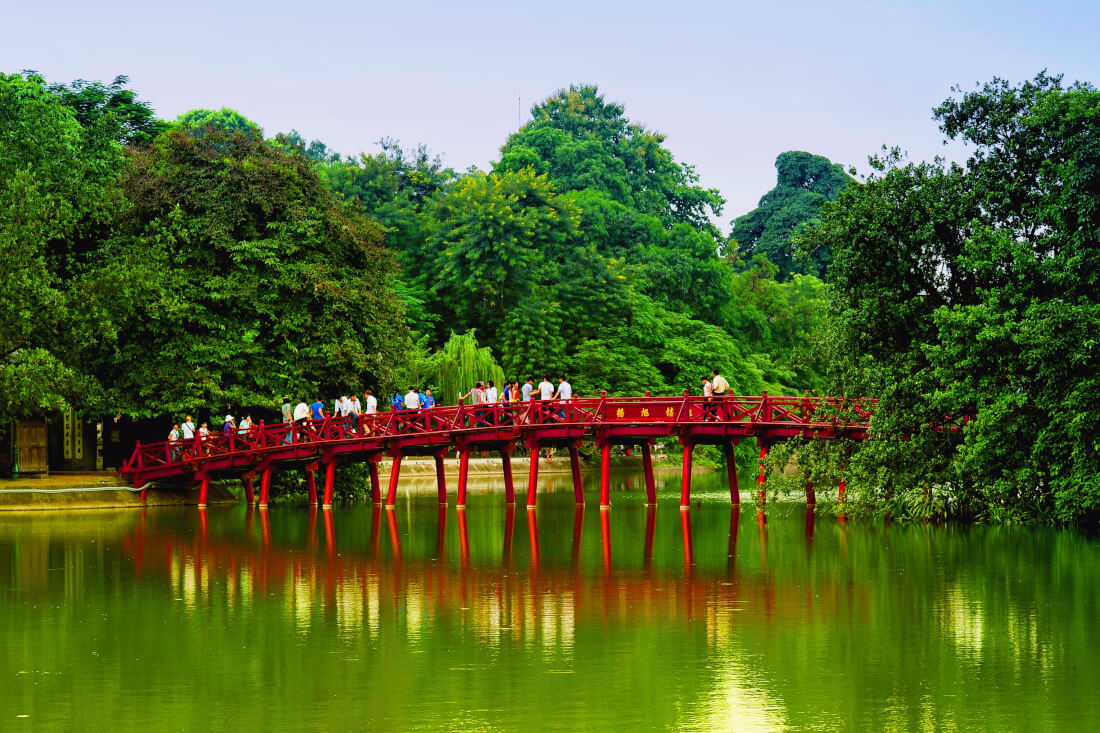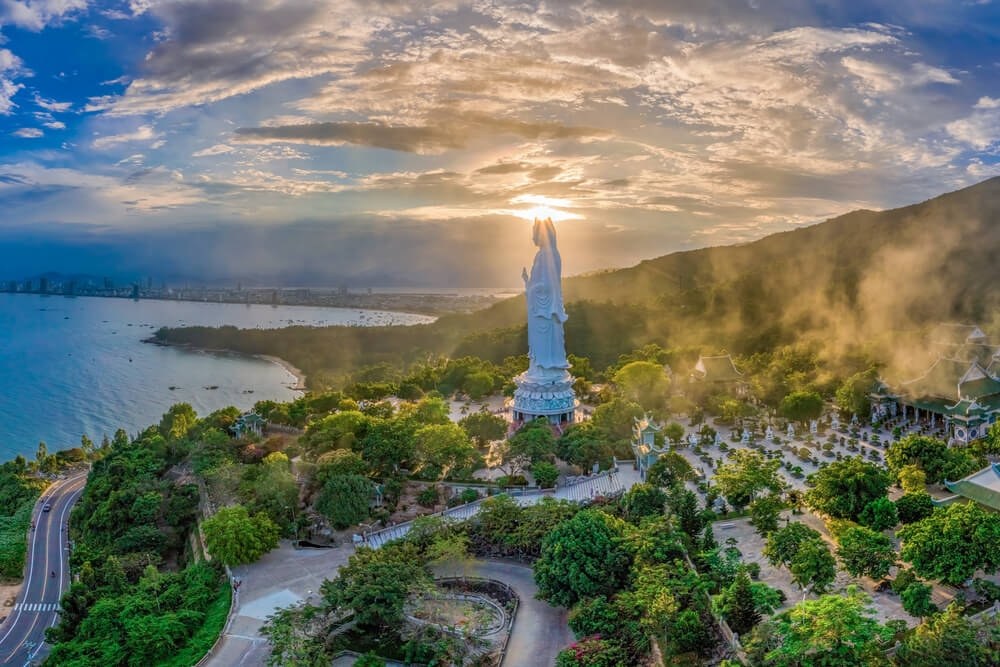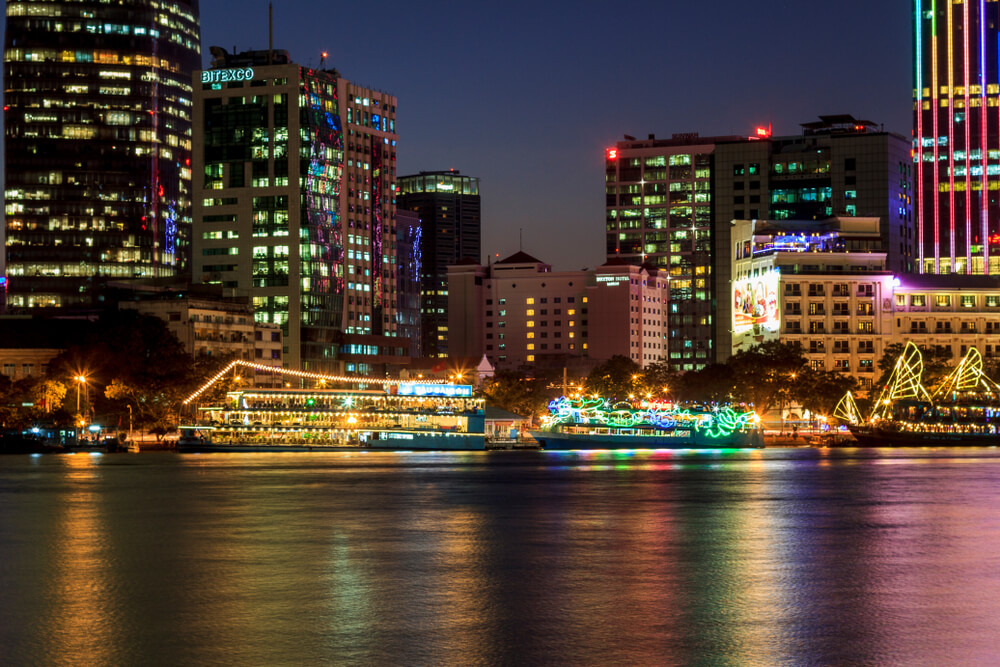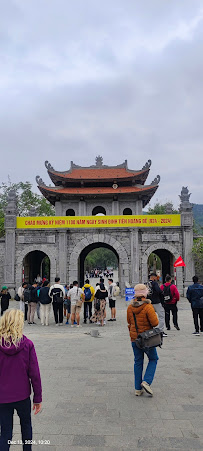Vietnam Temperature in September

- Average Temperature Range (°C and °F): Temperatures range from 25–31°C (77–88°F) in Hanoi and Ninh Binh, while highland destinations like Sapa stay cooler at 18–24°C (64–75°F). This is t...

- Average Temperature Range (°C and °F): Central Vietnam stays warm at 26–33°C (79–91°F), with coastal breezes making the heat more comfortable. It’s still a good time for both sightseeing...

- Average Temperature Range (°C and °F): Temperatures remain steady at 24–32°C (75–90°F), typical of the tropical climate. Warm days are balanced by cooling afternoon rains.
Frequently Asked Questions (FAQs)
Yes, September is a great time to visit Vietnam, as it’s the start of the shoulder season with fewer crowds and lower travel costs. The landscapes are lush and vibrant after the summer rains, and cultural festivals such as the Mid-Autumn Festival add a unique charm. While some regions experience occasional showers, they are usually short-lived and often in the afternoon, leaving mornings sunny and pleasant. The Vietnam temperature in September is comfortable for most activities, from exploring the rice terraces in the north to relaxing on central coast beaches, making it a balanced time for both cultural and nature-based travel.
Vietnam in September experiences warm, tropical conditions with noticeable regional variation. In the north, temperatures range from mild mornings to comfortably warm afternoons, while the central region stays hot and sunny for most of the month. The south remains consistently warm and humid, with occasional rain to cool the air. The Vietnam temperature in September typically ranges from pleasant coolness in the highlands to balmy warmth along the coasts, making it suitable for diverse activities such as hiking, sightseeing, and beach visits without the extremes of peak summer or winter.
Yes, rainfall is common in September, but its intensity and frequency vary by region. The north experiences fewer showers than in August, while central Vietnam begins to see more rain toward the end of the month. The south remains in its wet season, with predictable afternoon downpours that last an hour or two. These showers often refresh the air and bring out the country’s lush green landscapes. Despite the rain, the Vietnam temperature in September remains pleasant, and with smart planning, scheduling outdoor activities in the morning, you can still enjoy a wide range of destinations without major weather disruptions.
The Vietnam temperature in September varies by region: northern cities like Hanoi average 25–31°C (77–88°F), with cooler highlands like Sapa at 18–24°C (64–75°F). Central Vietnam, including Da Nang and Hoi An, remains warm at 26–33°C (79–91°F), perfect for beach activities. Southern areas like Ho Chi Minh City see 24–32°C (75–90°F), with high humidity and short, intense afternoon showers. These temperature differences allow travellers to choose experiences that match their comfort level. Cooler trekking in the north, sunny seaside escapes in the centre, or lush river landscapes in the south, making September a versatile month for exploring the country.
Central Vietnam typically enjoys the best weather in September. Cities like Da Nang, Hoi An, and Hue experience warm, sunny days with less rainfall compared to the north and south. The Vietnam temperature in September in this region averages around 27–32°C, making it ideal for sightseeing and beach visits. While the north begins its transition into autumn and the south remains hot with sporadic rains, central Vietnam strikes a balance. This is also the best time to explore the imperial city of Hue or the lantern-lit streets of Hoi An without intense heat or heavy crowds. Central Vietnam's relatively dry climate during this month offers the most consistent conditions for travel.
Yes, you can visit several beaches in Vietnam during September, especially those along the central coast. Destinations like Da Nang, Nha Trang, and Hoi An often have favourable weather for beach outings. The Vietnam temperature in September remains warm, hovering between 28–33°C, ideal for swimming and sunbathing. While northern beaches may start to cool slightly and the south sees brief rains, central beaches usually stay dry and clear. However, always check local forecasts since weather can vary. You’ll also find fewer tourists at this time, meaning quieter sands and better deals on beachfront resorts. Just be cautious of occasional rough seas and avoid areas prone to typhoons.
September is a great time to explore both nature and culture in Vietnam. The cool Vietnam temperature in September (especially in the north) makes it ideal for scenic train rides, countryside motorbike tours, and visiting heritage towns like Hoi An. In the central region, sunny skies are perfect for relaxing on beaches or discovering ancient ruins in Hue and My Son. Northern areas like Sapa and Ha Giang begin to see golden rice terraces, an unmissable sight. Cultural events like the Mid-Autumn Festival often fall in this month, offering a unique look at local traditions. Fewer crowds and transitional weather make this a versatile time to explore.
Yes, September is a fantastic time for trekking in northern Vietnam. The Vietnam temperature in September in regions like Sapa, Ha Giang, and Mu Cang Chai ranges between 18–25°C, cooler and more pleasant than in the summer. This is also harvest season, and the terraced rice fields are vibrant shades of gold, offering postcard-worthy landscapes. Trails may still be muddy from the tail-end of the rainy season, so good hiking shoes and a raincoat are essential. Weather improves steadily throughout the month, with clearer skies toward late September. It's one of the best months for photography, cultural interaction with ethnic minorities, and panoramic trekking.
Tourist attractions in Vietnam are generally less crowded in September. As it's the shoulder season between the summer peak and autumn holidays, you’ll enjoy more space at major sights like Halong Bay, Hoi An, and the Cu Chi Tunnels. The Vietnam temperature in September is still warm but more bearable than the summer highs, making sightseeing comfortable. Accommodation and tour prices are often lower, and availability is higher, making it a budget-friendly time to travel. Popular landmarks are accessible without the usual long queues, allowing for a more relaxed pace. However, weekends and the Mid-Autumn Festival (if it falls in September) may still see local crowds.
Packing for Vietnam in September requires a mix of light and weather-resistant clothing. The Vietnam temperature in September varies by region, hot and humid in the south, mild in the north, and warm in the centre. Breathable fabrics like cotton and linen are ideal. Include a lightweight rain jacket or umbrella, especially for the north and south, where short showers are common. Sturdy walking shoes are useful if you plan to trek or explore rural areas. In cooler northern regions, a light sweater for evenings is handy. Don’t forget swimwear for beach days and respectful clothing (like long sleeves) for temple visits.
Yes, September is a budget-friendly time to travel to Vietnam. It’s considered a shoulder season, meaning fewer international tourists and more competitive pricing. Flights, hotels, and even guided tours are often more affordable compared to peak summer or winter months. The Vietnam temperature in September remains warm, averaging between 25–33°C, making it ideal for sightseeing without the premium costs. Attractions are less crowded, so you can explore at a relaxed pace and find great deals on transport and accommodations. Budget travellers can enjoy good weather and cultural richness while saving on expenses, especially in central and northern Vietnam, where rainfall starts to reduce.
One of the most celebrated events in Vietnam during September is the Mid-Autumn Festival (Tết Trung Thu), often held in the middle or late September. Streets come alive with lantern parades, lion dances, and mooncake feasts. It’s a family-centric celebration, perfect for experiencing local culture, especially in Hanoi and Hoi An. In addition, you may find local harvest festivals in northern provinces where rice terraces turn golden. The Vietnam temperature in September is moderate and pleasant for outdoor festivities, with cooler nights in the north. Experiencing these festivals offers a unique, culturally immersive layer to your trip, beyond beaches and landscapes.
No, September is not part of the peak tourist season in Vietnam. It falls between the summer rush and the winter holiday travel boom, making it part of the shoulder season. The Vietnam temperature in September is warm but not extreme, ranging from 25–33°C, offering comfort for travel without the intensity of summer heat. Tourist attractions, beaches, and city landmarks are noticeably less crowded, allowing for a more relaxed and authentic experience. It’s a great month for travellers who prefer to explore without navigating packed tours or long lines. Off-season deals and better availability of accommodations also make it more appealing.
Yes, the weather in Vietnam varies significantly by region in September. In the north, temperatures begin to cool slightly (around 24–30°C), and rains start to subside, making it great for trekking and sightseeing. In contrast, the south remains hot and humid (27–33°C), with short but heavy tropical showers. The Vietnam temperature in September showcases this regional diversity, while the north eases into autumn, the south still holds on to its wet season. Meanwhile, central Vietnam (like Da Nang and Hoi An) sees relatively dry weather and is ideal for beachgoers. Always check the forecast for your specific destination.
Yes, the weather in Vietnam varies significantly by region in September. In the north, temperatures begin to cool slightly (around 24–30°C), and rains start to subside, making it great for trekking and sightseeing. In contrast, the south remains hot and humid (27–33°C), with short but heavy tropical showers. The Vietnam temperature in September showcases this regional diversity, while the north eases into autumn, the south still holds on to its wet season. Meanwhile, central Vietnam (like Da Nang and Hoi An) sees relatively dry weather and is ideal for beachgoers. Always check the forecast for your specific destination.
Yes, swimming and snorkelling are possible in Vietnam during September, particularly in central coastal regions like Nha Trang, Da Nang, and Cham Island, where the waters are relatively calm and clearer. The Vietnam temperature in September supports water activities, with warm air (28–33°C) and sea temperatures still inviting. However, the south (Phu Quoc, Con Dao) may face rougher seas and reduced visibility due to lingering monsoon effects. It’s best to avoid snorkelling in storm-prone areas and stick to certified local operators who monitor sea conditions closely. For the best experience, plan your aquatic adventures in the first half of the month.
Travel disruptions due to weather in September are possible but usually manageable. The Vietnam temperature in September varies across regions (24–33°C), with occasional afternoon rains or short storms, especially in the south and north. While flights and long-distance buses usually operate on schedule, rural areas or mountain roads (like those in Sapa or Ha Giang) may experience delays due to slippery or washed-out conditions. Boat trips to islands like Phu Quoc or Cat Ba can be affected by rough seas. It’s wise to allow buffer time between destinations and check weather forecasts. Travel insurance and flexible bookings are recommended during this transitional season.
In September, Vietnam experiences relatively balanced daylight hours. Sunrise generally occurs between 5:30 AM and 6:00 AM, while sunset is around 6:00 PM to 6:15 PM, depending on the region. These consistent daylight windows provide ample time for sightseeing, especially when paired with the warm Vietnam temperature in September, which ranges from 25–33°C. Mornings are usually clearer and less humid, making them ideal for treks or city tours, while late afternoons may bring short rains, particularly in the north and south. Early risers will enjoy vibrant skies, quieter streets, and cooler temperatures for exploration before the day warms up.
Air quality is generally not a major concern in most of Vietnam during September, especially compared to the dry winter months when pollution tends to peak. With the Vietnam temperature in September hovering between 24–33°C and the presence of regular rainfall, dust and pollutants are naturally washed out of the air. In Hanoi and other northern cities, early autumn brings fresher air than during summer, although brief traffic-related pollution may still occur. Rural areas and beach towns usually have very good air quality. However, always check AQI apps for real-time data if you’re sensitive to air pollutants or have respiratory issues.
Yes, Hanoi remains warm and somewhat humid in September, though it begins transitioning from summer into early autumn. The Vietnam temperature in September in Hanoi typically ranges from 24°C in the mornings to around 31°C in the afternoons. Rainfall still occurs but is less intense than in August, and evenings can start to feel slightly cooler, especially in late September. It’s a great time to explore the city’s lakes, old quarters, and cultural sites with fewer crowds. Light clothing, sunscreen, and a compact umbrella are recommended. The blend of warmth and softening rains makes it one of Hanoi’s more pleasant months.
















